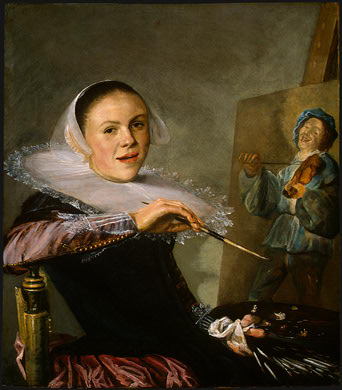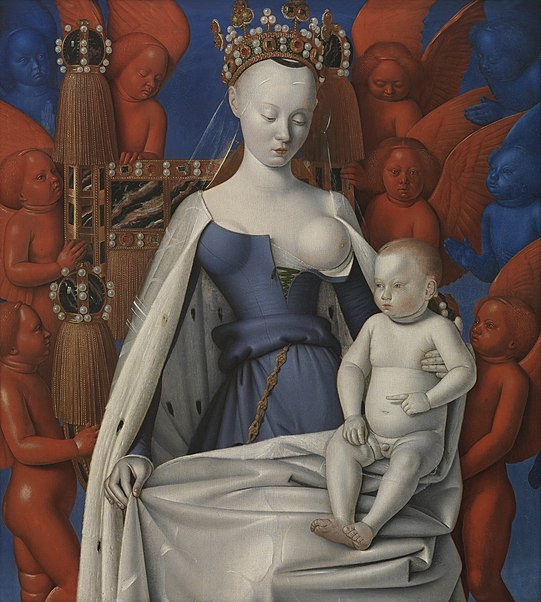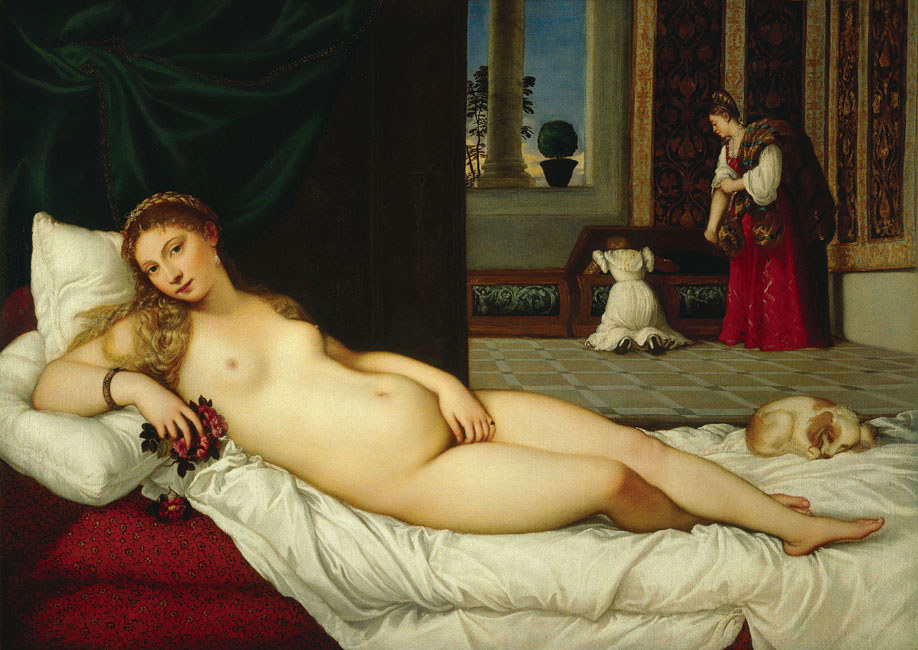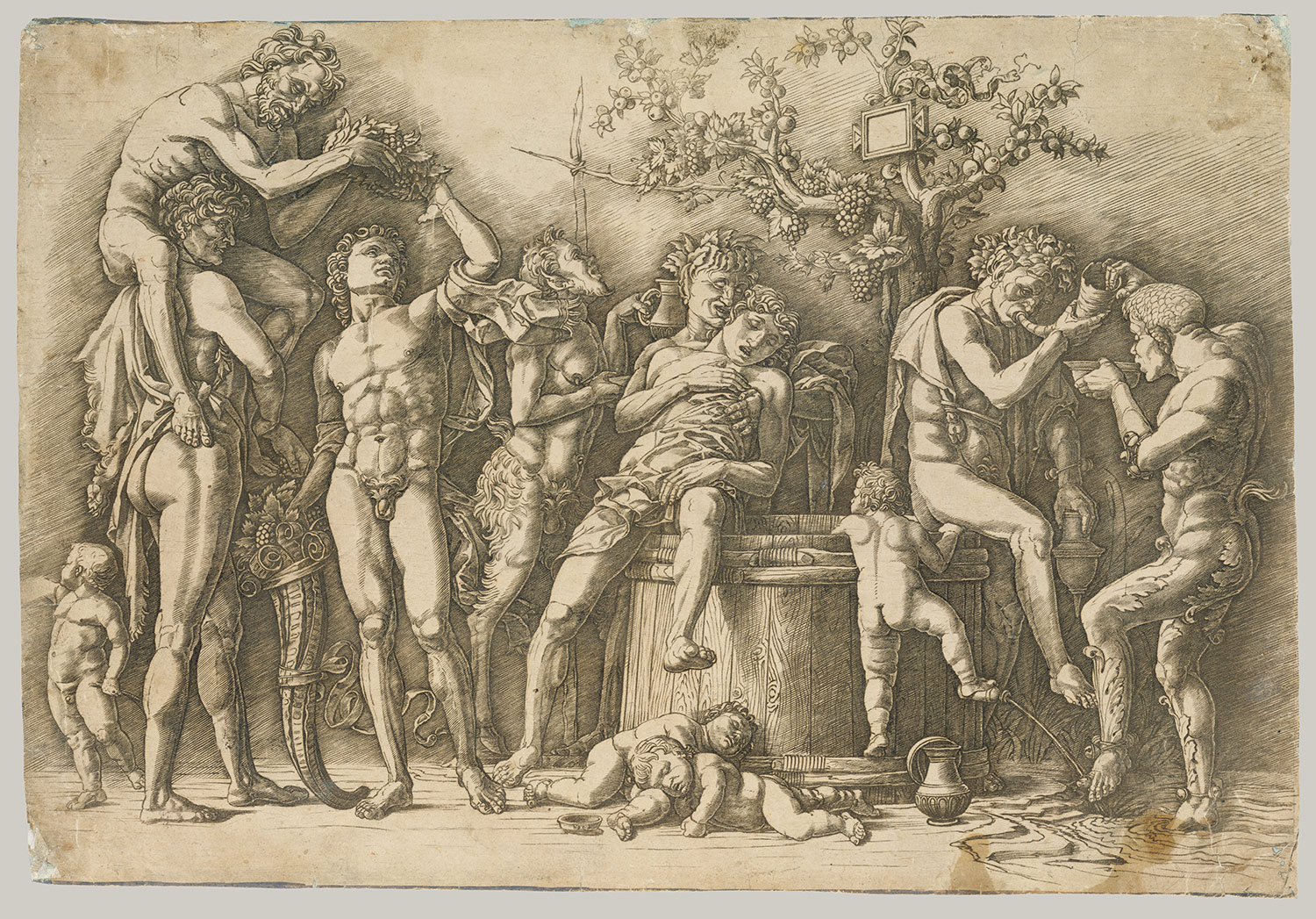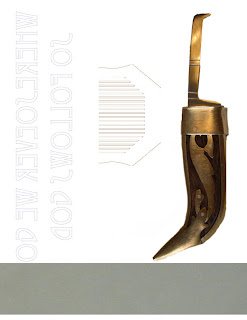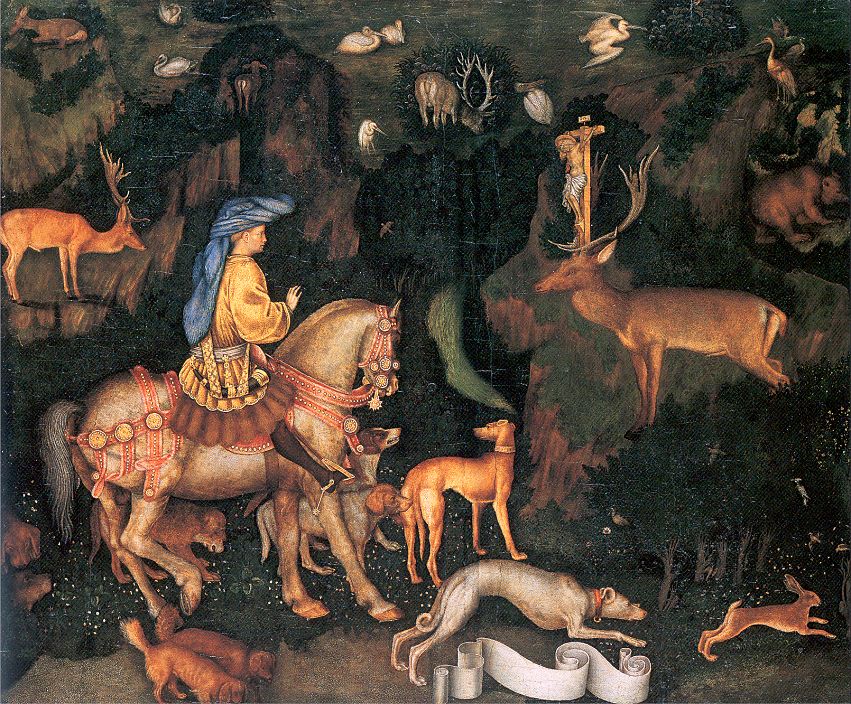 Domenico Mecarino- 'Saint Catherine of Siena Receiving the Stigmata,' between 1513 and 1515.
Domenico Mecarino- 'Saint Catherine of Siena Receiving the Stigmata,' between 1513 and 1515.
Tuesday, September 30, 2008
Lucy Boltz- El Greco Laocoon
El Greco made this at the end of his life in 1610-1614. It depicts the Greek tale of Laocoon. Laocoon was a priest of Poseidon who advised his people not to accept the wooden horse from the Greeks. In the legend, Laocoon and his sons are killed by snakes sent by Minerva. This motif became popular after the discovery of a Hellenistic Bronze Statue of the same subject in Rome in early 1600's. 

Gus Wenner - Madonna del Cardellino 1506
http://www.italica.rai.it/argomenti/storia_arte/raffaello/galleria/cardellino.jpg
For some reason it will not let me upload this image or drag it into the blog. Sorry, web attachment above.
For some reason it will not let me upload this image or drag it into the blog. Sorry, web attachment above.
Sunday, September 28, 2008
Saturday, September 27, 2008
Thursday, September 25, 2008
Zung - Fra Angelico
Lucy Boltz- Hieronymus Bosch
Wednesday, September 24, 2008
Ethan Cecchetti - Botticelli's Venus
This is extremely famous painting by Botticelli created in the 1480's. It depicts Venus (the goddess) coming from the sea on a half shell as a fully-formed woman.

Interestingly, the image displays Pagan gods and goddesses despite Botticelli being an Italian Renaissance painter (and therefore living in a Roman Catholic society).

Interestingly, the image displays Pagan gods and goddesses despite Botticelli being an Italian Renaissance painter (and therefore living in a Roman Catholic society).
Gina Walker: painting created between 1400-1550
The Meeting of the Three Kings with David and Isaiah (approx. 1460-1480)


Monday, September 22, 2008
Geoff Mino-- Leonardo DaVinci (and tshirt components)
DaVinci is known for his work involving proportion and perspective, both of which are essential to realistic representation. His techniques created space (foreground/background), volume, and a photographesque quality of "realness." Here are some classic images:



Also, here is my tshirt design, or rather the components of the design; I was having lighting issues trying to get a photo of the actual finished shirt:
Sunday, September 21, 2008
Lucy Boltz- Antonio Pollaiuolo

 Antonio del Pollaiuolo was a Florence-born engraver, painter, sculptor, and metal worker who collaborated with his brother Piero. He was interested in employing empiricism and anatomical knowledge in his art, and is thought to be one of the first to study anatomy through dissection. His most famous engraving is "The Battle of Ten Nudes" which depicts nudes from multiple angles in battle in a balanced in composition with matching pairs of fighters reflects his interest in the muscular form of tension and action. He was not aware of the fact that every muscle cannot be flexed simultaneously. Therefore, his figures appear stilted and super-human with their over-flexed tense muscles. The bronze sculpture of Hercules and Antaeus also reflects his interest in using the act of violence as a means of representing the active human form.
Antonio del Pollaiuolo was a Florence-born engraver, painter, sculptor, and metal worker who collaborated with his brother Piero. He was interested in employing empiricism and anatomical knowledge in his art, and is thought to be one of the first to study anatomy through dissection. His most famous engraving is "The Battle of Ten Nudes" which depicts nudes from multiple angles in battle in a balanced in composition with matching pairs of fighters reflects his interest in the muscular form of tension and action. He was not aware of the fact that every muscle cannot be flexed simultaneously. Therefore, his figures appear stilted and super-human with their over-flexed tense muscles. The bronze sculpture of Hercules and Antaeus also reflects his interest in using the act of violence as a means of representing the active human form.
#7-Momo Ishiguro: Sandro Botticelli

Though Botticelli used classic Renaissance techniques like chiaroscuro and vanishing points, he did not adhere to the "rules of perspective" as strictly as his colleagues did. Some of his paintings fail to perfectly give the illusion of depth, oftentimes because the perspective lines fail to meet at one point. In this particular painting, entitled Cestello Annunciation, the diagonal lines on the floor give depth to the room, while the tree's smaller size makes it appear to be farther away. Chiaroscuro, or shading, gives the people and objects volume and a 3-D appearance
Pisanello- Dominique Daba
St Eustace meets the Stag of Christ
In this piece by Pisanello he used layering and overlapping to try and create space; all the animals surrounding the horse are kind of slapped onto each other. He also tried to use relative size by making the animals at the top of the painting smaller to appear as if they are farther away and in the distance.
In this piece by Pisanello he used layering and overlapping to try and create space; all the animals surrounding the horse are kind of slapped onto each other. He also tried to use relative size by making the animals at the top of the painting smaller to appear as if they are farther away and in the distance.
7 - Ahalya Nirmalan: Brunelleschi
Filippo Brunelleschi was one of the main architects/engineers during the Italian Renaissance. Apparently it was Brunelleschi who was credited with inventing linear perspective in 1415. He demonstrated this geometrical method by painting the Baptistry (an octagonal building) in Florence. He put a hole through the painting at the perspective vanishing point and when you looked through the hole (from the unpainted side) at a mirror that showed the painting, an illusion of depth was created. Many painters then began to use linear perspective in their artwork.
Unfortunately, his perspective paintings were lost, but here is a dome that he designed.

Unfortunately, his perspective paintings were lost, but here is a dome that he designed.

Ethan Cecchetti: Piero Della Francesca
Piero Della Francesca was an artist in the early Renaissance who is known for the geometric forms in his artwork, especially the linear perspective. The following is a simple and obvious example of such perspective.

We can clearly see his use of perspective in the lines on the ground and the inner faces of the buildings to the side of the main circular building in the center. The lines on the ground create the illusion that the building is quite far away from us, and the buildings on the side create a depth that extends well behind the circular centerpiece. However, the lines also draw our eye to the center of the piece, pointing us toward that one building.
On the whole, Francesca has created a piece that makes good use of linear perspective to create depth and distance while still making it clear exactly what we're supposed to be looking at.

We can clearly see his use of perspective in the lines on the ground and the inner faces of the buildings to the side of the main circular building in the center. The lines on the ground create the illusion that the building is quite far away from us, and the buildings on the side create a depth that extends well behind the circular centerpiece. However, the lines also draw our eye to the center of the piece, pointing us toward that one building.
On the whole, Francesca has created a piece that makes good use of linear perspective to create depth and distance while still making it clear exactly what we're supposed to be looking at.
Zung - Raphael

Raphael Sanzio, was an Italian painter and architect of the French renaissance , who, together with Leonardo Da Vinci and Michelangelo formed the trinity of great masters of that period. Raphael was prolific, and despite his early death at the age of 37. left a large amount of artwork behind, especially in the Vatican.
In the above piece "Mond Cruxifiction", space is created with the use of a horizon line and a vanishing point where lines meet behind the cross on the horizon line. Space is also created by the use of lightness and contrast (so objects closer to the viewer are generally lighter), sharpness (the background scenery is blurry) and size. Objects closer to the viewer are larger in size.
Raphael Sanzio, was an Italian painter and architect of the French renaissance , who, together with Leonardo Da Vinci and Michelangelo formed the trinity of great masters of that period. Raphael was prolific, and despite his early death at the age of 37. left a large amount of artwork behind, especially in the Vatican.
http://upload.wikimedia.org/wikipedia/commons/thumb/1/18/CrocefissioneRaffaello.jpg/355px-CrocefissioneRaffaello.jpg
In the above piece "Mond Cruxifiction", space is created with the use of a horizon line and a vanishing point where lines meet behind the cross on the horizon line. Space is also created by the use of lightness and contrast (so objects closer to the viewer are generally lighter), sharpness (the background scenery is blurry) and size. Objects closer to the viewer are larger in size.
http://upload.wikimedia.org/wikipedia/commons/thumb/1/18/CrocefissioneRaffaello.jpg/355px-CrocefissioneRaffaello.jpg
In the above piece "Mond Cruxifiction", space is created with the use of a horizon line and a vanishing point where lines meet behind the cross on the horizon line. Space is also created by the use of lightness and contrast (so objects closer to the viewer are generally lighter), sharpness (the background scenery is blurry) and size. Objects closer to the viewer are larger in size.
Ashtin Charles- Andrea Mantegna
 Andrea Mantegna was an Italian Renaissance artist during the 15th century. Similar to other artists of his time, Mantegna also played with perspective in his pieces. His style was to lower the horizon line so that the objects in his works would appear to be larger.
Andrea Mantegna was an Italian Renaissance artist during the 15th century. Similar to other artists of his time, Mantegna also played with perspective in his pieces. His style was to lower the horizon line so that the objects in his works would appear to be larger.I particularly like how he was able to capture a sense of looking up into the sky from down below. Mantegna also studied Roman archaeology, which would explain the influence of most of his works. Also, there are cherubs playing around this structure and the sky provides a nice backdrop. The sense of illusion was well developed in this piece.
Gina Walker: Lorenzo Ghiberti
 This panel was completed in 1452 and was one of 20 panels on a door created by Lorenzo Ghiberti. Ghiberti was an italian artist of the early Renaissance famous for his sculptures and metalworks. This panel gives the illusion that there is a lot of depth by making objects in the foreground much larger than the objects in the background. Also, by overlapping the objects Ghiberti manupulates the space in a way that makes the viewer really believe the objects in the back are in the distance.
This panel was completed in 1452 and was one of 20 panels on a door created by Lorenzo Ghiberti. Ghiberti was an italian artist of the early Renaissance famous for his sculptures and metalworks. This panel gives the illusion that there is a lot of depth by making objects in the foreground much larger than the objects in the background. Also, by overlapping the objects Ghiberti manupulates the space in a way that makes the viewer really believe the objects in the back are in the distance.Jak Koning-- Giotto
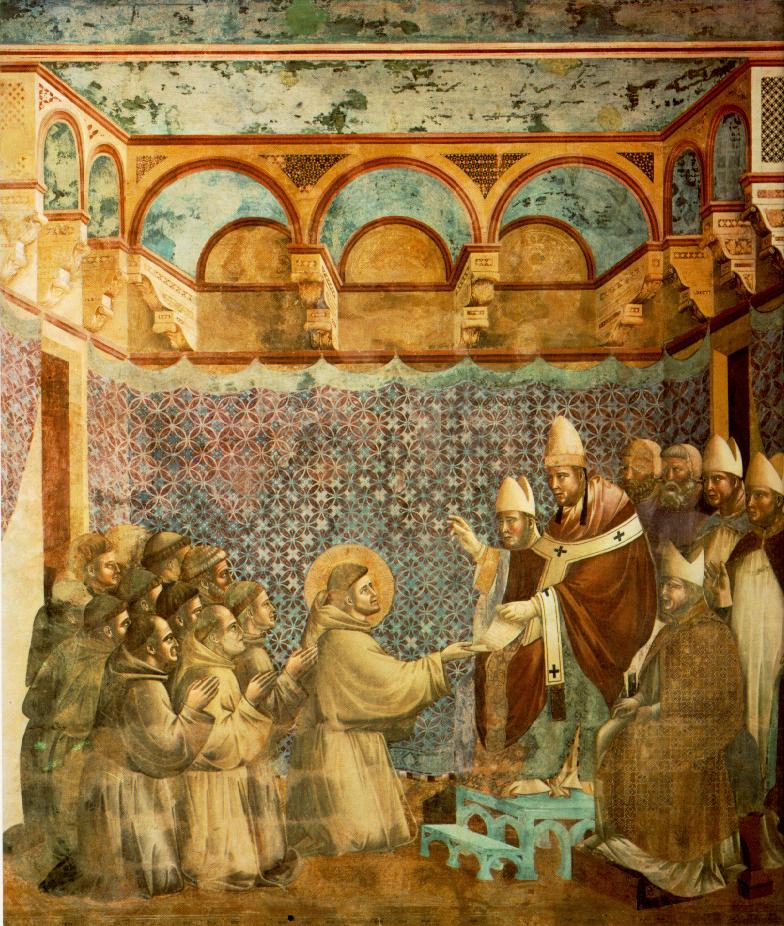 Giotto (di Bondone) was an Italian artist in the 13th and 14th centuryies who painted and sculpted in Florence, Italy. He is considered one of the first great artist who contributed to the Italian Renaissance. You can see his use of perspective in the arches in the upper third of the painting and also in the change of height of the onlookers on either side of the work.
Giotto (di Bondone) was an Italian artist in the 13th and 14th centuryies who painted and sculpted in Florence, Italy. He is considered one of the first great artist who contributed to the Italian Renaissance. You can see his use of perspective in the arches in the upper third of the painting and also in the change of height of the onlookers on either side of the work.He is also the namesake for the Campanile di Giotto in Florence, but it was not completed to his design even though he was the chief the architect.
Madeleine Filloux: Masaccio

Masaccio, an Italian artist born in 1401, was one of the first painters to use scientific perspective in his art. Associated with the Quattrocento period of the Italian Renaissance, he transitioned from a Gothic style to a more realistic and natural approach. In his Holy Trinity fresco (above), the clear use of a centered vanishing point and the overlapping of figures in the foreground establish a convincing sense of space and direct the eye to the figure of Christ.
Saturday, September 20, 2008
franny choi: Donatello
Donatello is widely considered to be the greatest sculptor of the early Renaissance. One of the formal characteristics of his work was rilievo schiacciato, or flattened relief, in which he applies the rules of perspective so that each figure emerges clearly and logically even though the scene is modeled at a shallow depth.

In the above piece, The Feast of Herod (a relief on the baptismal font in the Baptistry of Siena), Donatello employs overlapping and relative size, as you can see in the arches and the people in the background. He also uses linear perspective in sculpting the two rows of arches.

In the above piece, The Feast of Herod (a relief on the baptismal font in the Baptistry of Siena), Donatello employs overlapping and relative size, as you can see in the arches and the people in the background. He also uses linear perspective in sculpting the two rows of arches.
Friday, September 19, 2008
playing catch-up with franny choi!
trying to catch up on blog entries. sorry i'm so behind on the times....
Contemporary Artist: Andrea Zittel

Andrea Zittel is an American installation artist whose works are often a blend of functionality, environmentalism, and social/political statement. Her Living Units, above, attempts to reduce an entire living space into a single, compact unit (the project came about while Zittel was living in her 200 sq ft Brooklyn apartment). Other projects explore and experiment with efficiency, isolation, and personal freedom.

Her latest project, the smockshop, is a collective that generates income for artists whose work is either non-commercial or not yet self-sustaining. Artists sew their own adaptations of a simple dress designed by Zittel.
Gestalt Principles

In the above figure, the relationship between figure and ground change as the viewer perceives either two letter 'E's or two arrows.
Contemporary Artist: Andrea Zittel

Andrea Zittel is an American installation artist whose works are often a blend of functionality, environmentalism, and social/political statement. Her Living Units, above, attempts to reduce an entire living space into a single, compact unit (the project came about while Zittel was living in her 200 sq ft Brooklyn apartment). Other projects explore and experiment with efficiency, isolation, and personal freedom.

Her latest project, the smockshop, is a collective that generates income for artists whose work is either non-commercial or not yet self-sustaining. Artists sew their own adaptations of a simple dress designed by Zittel.
Gestalt Principles

In the above figure, the relationship between figure and ground change as the viewer perceives either two letter 'E's or two arrows.
Labels:
contemporary artist,
franny choi,
gestalt
Subscribe to:
Posts (Atom)



